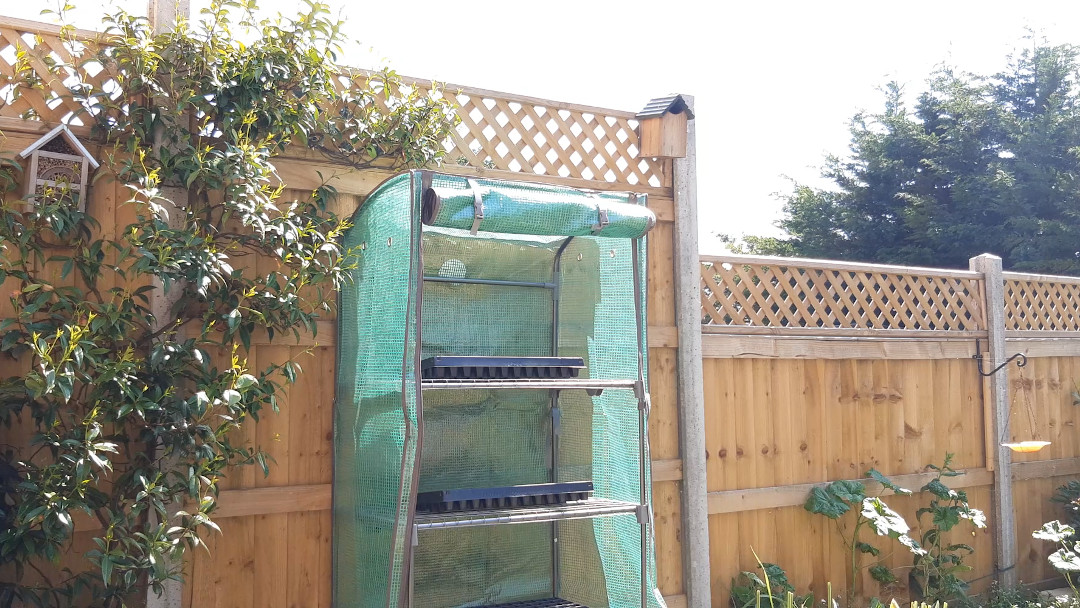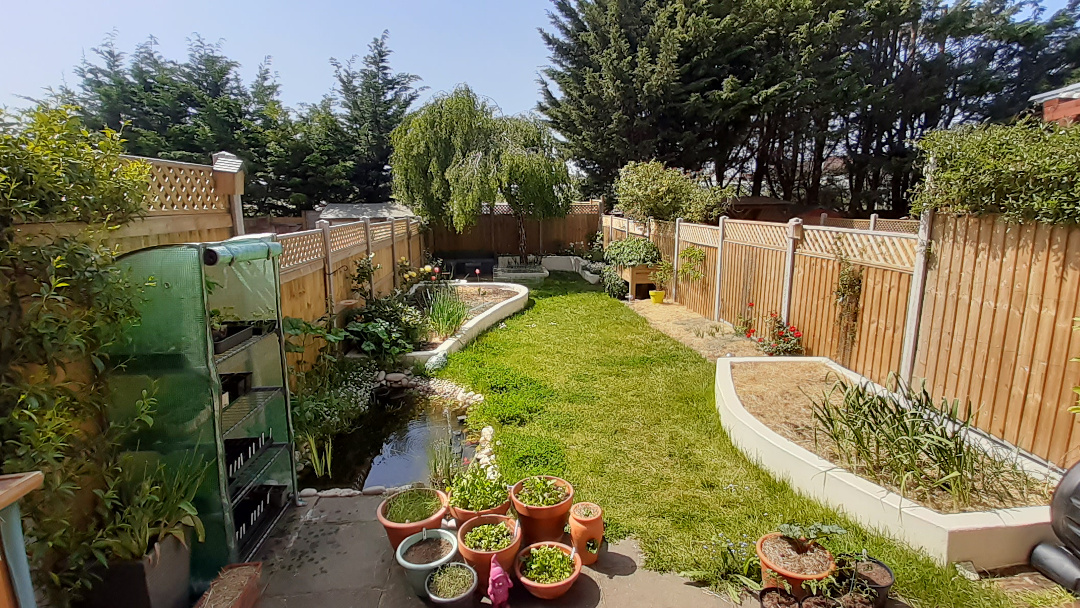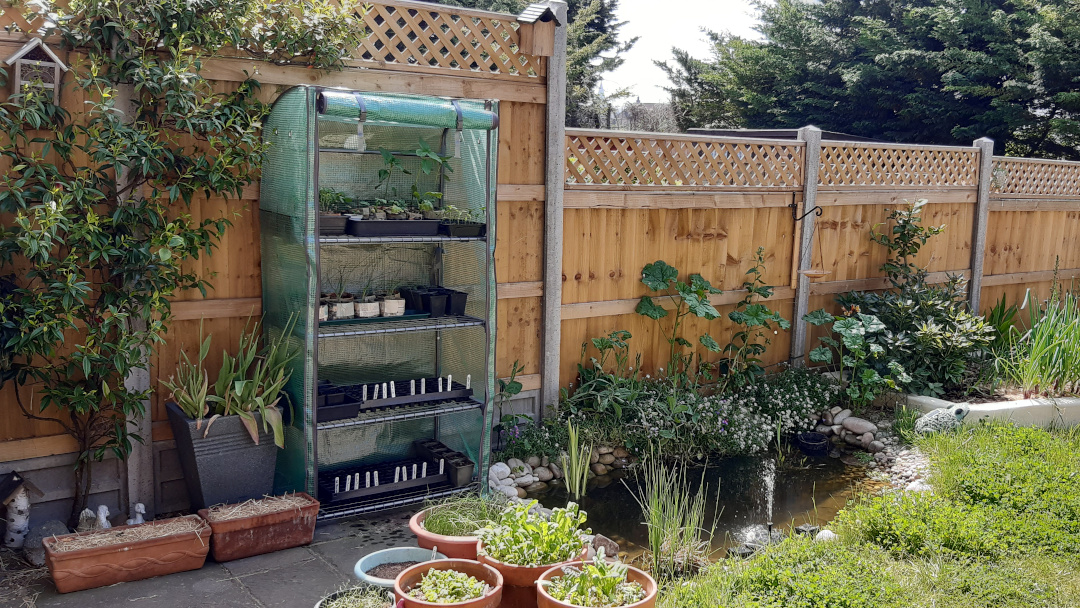Getting a growhouse
Sowing undercover for better results
This page may contain affiliate links. For a better user experience, you'll never see any adverts on this website but the small commision from affiliate links keeps it going.
If, like me, you don’t have much sunny windowsill space, or would prefer to have all of your seedlings in the same place for easy maintenance… then a growhouse may be exactly what you need.

A growhouse provides a warm and protected environment, which is perfect for seeds to germinate and grow for the first few weeks of their lifetime. With a little care they will remain pest free and will protect tender seedlings from chilly winds and frost.
Which growhouse?
I’ve had a few different growhouses over the years and my latest is by far my favourite.

I chose the GrowZone Greenhouse which can be found here:
- GrowZone Greenhouse
- GrowZone Max Growhouse - Slightly wider than the one I have but same style
I’m really happy with my choice and I feel it boils down to a few simple reasons:
- The top of the growhouse has square corners at the top, rather than the rounded versions often seen in other similar products. This means that seedlings at the ends of your trays aren’t damaged when being taken in and out and allows you to use the full width of the growhouse.
- This version has 4 shelves, with the topmost shelf being taller than the lower 3. Freshly sown seeds can go on a bottom shelf and will be moved up as shelves become available or when the seedlings start growing. This means that the top shelf will house the largest seedlings, which will be taller. It’s a small design choice but I think a very clever one.

Other than these two reasons, the growhouse is sturdy, easy to construct and a suitable size.
Why a growhouse?
I’m a big fan of using the space you have and for so many years I had each windowsill of the house filled with seedlings and trays of compost. I didn’t try to consider different options because it was so practical.
However, over time, I have found that there are some drawbacks to using your windowsills:
- We have a cat and she loves nothing more than making my life difficult. This includes eating seedlings and digging up trays of compost. A quick fix was to have covers, which I could raise up over time and as the seedlings grew (this involved lots of tape and kebab sticks cut to length). This gets a bit fussy though and she can get into most things eventually.
- I quite like my windowsills being empty. I’m far from a perfectionist but I do enjoy an unobstructed view of the outside world.
- Each room is a different temperature and gets different amounts of light. This can cause leggy seedlings or lack of germination.
- When I need to look after the seedlings, I’m running around the house trying to remember what is where and when I last watered them.
With a growhouse, everything is in one place, it’s easy to maintain, the cat can’t get in and any mess is kept away from the house. There is also more surface area so I can grow more… which is only a great thing.
Where to put it
The position of your growhouse will vary massively depending on the layout of your garden and where you get the light.

I would recommend keeping the following things in mind, when trying to decide on a location (I’ve just noticed how many lists this post has… sorry):
- Is it easy to get to? You will be walking to the location of the growhouse often, is it easy, quick and safe to get to?
- Is it getting enough light? Germinating seeds need no light but the seedlings will, if they’re to be strong and survive being transplanted.
- Is it getting too much light? Vice versa from the previous point, growhouses get hot when in full sun, the position should be a little sheltered so it does not get baked all day long.
- Is it protected from strong winds? It should be supported or sheltered from strong winds so it doesn’t fly away.
Get into a rhythm
A growhouse allows you to be much more efficient with your growing space and can prevent empty spaces (wasted space) in your plot. If you know that you’re a few weeks away from harvesting a crop, you can get something going in the growhouse, ready to be transplanted when the harvest time comes.
This then saves a few weeks of growing in the ground and speeds up the next harvest. Lovely.

With a little preparation, you can also overlap crops which could share the same space over the year. A simple example is leeks and potatoes. The potatoes are in the ground over the spring and summer. Leeks can be transplanted after the harvest of potatoes, to then grow over the winter. Without getting the leeks started in the spring, they would not be large enough to harvest before the following spring… when you want to get potatoes in the ground again.
Getting into a good rhythm of having something growing outside, whilst something growing inside (in the growhouse) will make you a much more efficient grower and can dramatically increase the food you can grow with the same space.
Maintenance
Looking after a growhouse is quite straight forward. Each year you should give it a good clean, to ensure there are no lurking pests or diseases in there. The ideal time would be after the winter, before sowing the spring seeds, as it’ll probably be emptiest you’ll see it for a while.
Check that it’s secured correctly and the shelves are in good condition. The last thing you want is one coming loose and crushing the seedlings below.
The benefits:
- Can be moved around the garden to find the ideal growing location
- Cheaper than a greenhouse
- Saves windowsill space
- Creates a large area for sowing and growing seedlings
- Provides a warm and humid environment
- Protects from frost
- Compact
The drawbacks:
- Needs to be supported/secured from strong winds
- More likely to be damaged, over a greenhouse
- Needs checking often to ensure plants don't overheat
- Less pretty than a greenhouse
Is there anything I have missed? Where do you keep your growhouse in your garden? Have you encountered any problems?
Please put your thoughts and feedback in the comments.
Article written on May 09, 2020
Updated May 09, 2020